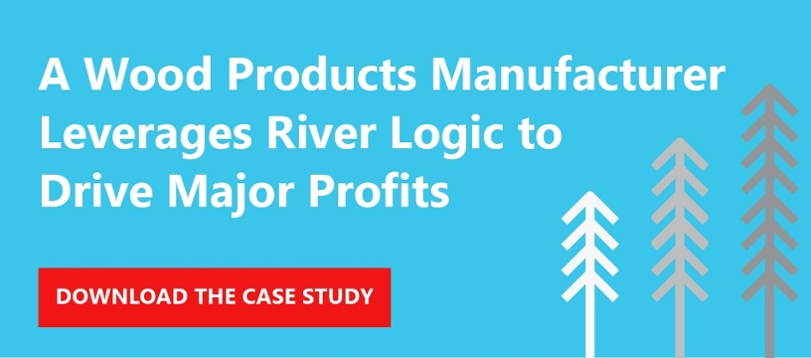The key to building a more efficient supply chain is twofold; 1) decisions need to be bolstered with advanced analytics and 2) those advanced analytics must be placed in the hands of decision makers instead of those in the Information Technology (IT) business sector.
Advanced analytics works by analyzing real-time data, predicting future scenarios and prescribing complex, profitable decisions on the spot. True, fully leveraging the spectrum of advanced analytics is a must for current and future successes within the manufacturing industry. However, understanding how to quickly and frequently act on insights from advanced analytics is becoming just as crucial.
Adopting Advanced Analytics into Your Business Systems
Many organizations don't know whether they should adopt advanced analytics. Will it be too difficult? Too time-consuming? Worried you don’t have the data or the integrations? If this is your thinking, you’re not alone.
The first step is to make a business case for adopting next-level analytics. As with any major business decisions, investing in analytics must always be linked to the actual return on investments (ROI). In a Gartner survey, only 4% of companies who invested in next-level analytics saw no increase in ROI. Intelligent supply chain management solutions that leverage advanced analytics can provide improved sophistication and efficiency for businesses.
Before understanding what level of analytics to adopt, let’s take a look at the three basic kinds of advanced analytics.
- Descriptive analytics uses business intelligence combined with existing data to provide a vision of what’s currently happening around your business.
- Predictive analytics uses forecasts and statistical models to judge and provide recommendations about what could happen.
- Prescriptive analytics uses optimization or embedded decision logic rules to find out what should be done in a certain situation. This form of analytics is the most advanced of existing analytics, as it can provide the best way forward given specific business variables, inputs and objective.
A Closer Look at Predictive and Prescriptive
Predictive Analytics: What can happen?
Taking descriptive analytics a step further, predictive analytics makes use of historical data and various algorithms to predict the outcomes of various what-if scenarios intelligently. This level of predictive analytics looks at all the possible situations within demand planning, costs, profits, inventory optimization, logistics and transportation and much more. Predictive allows organizations to anticipate anomalies through their supply chain network better and respond appropriately given past conditions. Businesses can determine shipments, consolidate underutilized capacity, and even rank various future-looking scenarios.
However, to make predictive analytics reliable, additional external data streams are required. Still quite new to supply chain organizations, predictive analytics have been proven successful in supply chain planning.
Prescriptive Analytics: What should be done?
Prescriptive analytics stems from the results provided by predictive analytics. Hence, predictive analytics is necessary for prescriptive-based planning. This level of analytics offers the best possible action plans to reach a desired outcome while keeping the overall objectives in sight. As previously stated, there are two approaches to prescriptive analytics: optimization (i.e., linear programming) and heuristics (i.e., using set rules to reach ideal decisions).
Gartner reports that only 10% of companies are currently taking advantage of prescriptive analytics. However, they project this number will increase more than three-fold within the next four years.
Some of the crucial scenarios that prescriptive analytics allows companies to answer include:
- What kind of an offer should we make to each customer?
- What should be my shipment strategy for each retail location?
- Which product should I launch and when?
- Where should I build a new factory?
- Should I build a new factory?
and much more …
With a short ramp-up time and improved integration systems, prescriptive analytics is becoming increasingly easier to adopt and use for business planning purposes.
Predictive Analytics vs Prescriptive Analytics – What’s the right choice?
It’s probably obvious that a company needs descriptive and predictive analytics in order to leverage prescriptive analytics. All three forms build on one another, and many refer to prescriptive as the final stage of business analytics maturity within a company.
Organizations that use both predictive and prescriptive analytics undoubtedly get the most from all of the “big data” platforms out there. These companies edge out their competition by being able to understand and interpret past and future events in a much better predictive fashion while drastically improving their decision making. This ability leads to improved confidence and trust across an entire business or enterprise.
Optimizing Growth through Analytics
Ultimately, investing in all three forms of analytics will provide organizations actionable insights equating to better and smarter decisions and better risk management.
As we stated earlier, simply leveraging advanced analytics like predictive and prescriptive will fail to provide the desired edge if it is not in the hands of business decision makers. Any advanced analytics software you choose to invest in must offer quick insight into prescriptive analytics to business users, not merely business analytics and business modelers. This capability better allows companies to respond in a timely manner and align decisions with business goals and objectives. In the end, the company overall will have full visibility into the business functions and prescribed execution, increasing shareholder value and communication across teams.








